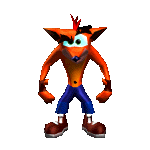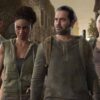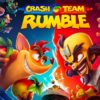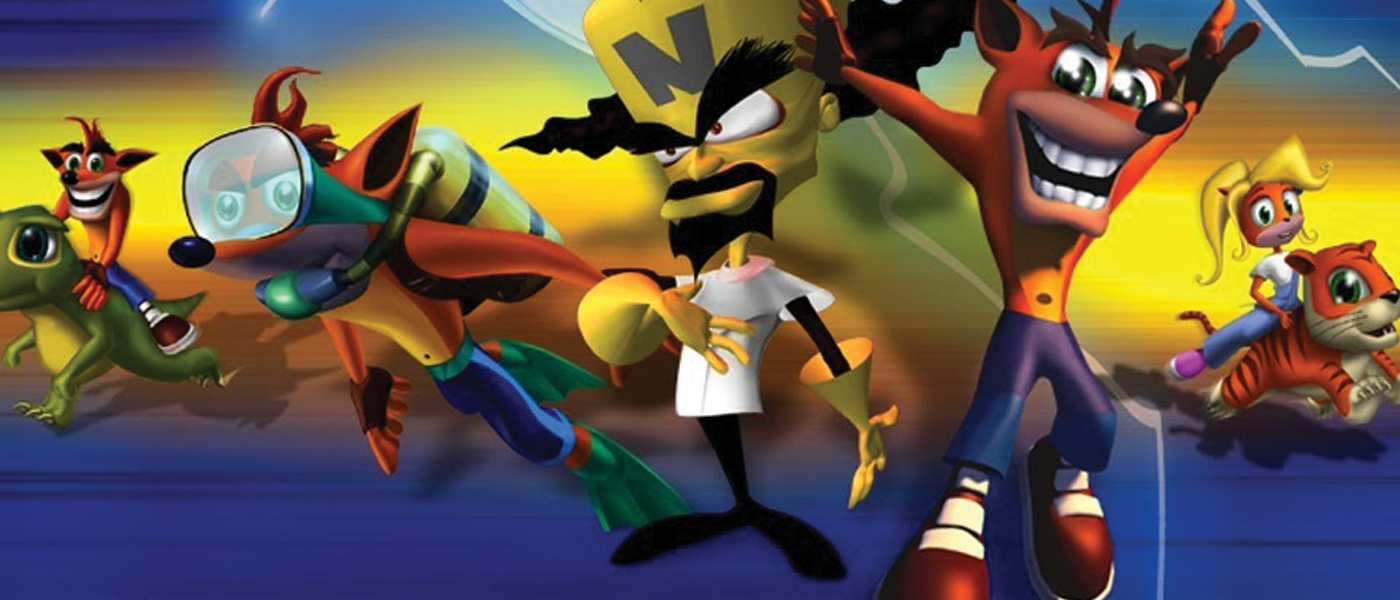
Our spin through the Crash series continues with Naughty Dog’s final platforming adventure for the Bandicoot. This adds a lot to the series formula with Crash having more rides to use and the level themes having more verity. Crash 3 is one of the strongest PlayStation 1 games out there, so lets take a look into why this Warp is one you should revisit.
The games production began in January 1998 with Naughty Dog having 10 & 1/2 months to complete the game with a 2.2$ million budget. Andy Gavin and other programs Stephen White & Greg Omi decided to work on three new gameplay styles for the game. All three had unique game engines built from scratch to work with the styles, with two of the engines being focused on three-dimensional gaming.

Those were the Air Plane and Jet-Ski stages with the final engine being used for the motorcycle gameplay portions. They were to make up a third of the core game, with the rest being a mixture of iconic Crash styled levels and riding levels where Coco, Crash’s sister, riding a tiger.
Originally, they were considering dropping the core Crash stages outright but Jason Rubin decided to keep that style of gameplay to not ‘abandon that style of gameplay that would mean abandoning a significant portion of gamers’.
Technical elements discussed during development was giving Crash a real shadow after Sony Computer Entertainment being ‘sick of that little discus that’s following him around’ and when creating the water for the game an environment map that reflects the sky was fitted onto the surface of the it to make it look more realistic.
Charles Zembillas reprises his role at art director/designer for Crash Bandicoot 3.  Uka Uka was created as a presence that would cause Doctor Neo Cortex to cower in fear. The emotion sketches depicting Cortex begging for forgiveness inspired the shot design and animation for the game’s cinematic introductory sequence. Because the game’s plot involved time travel, the time-traveling secondary antagonist Doctor Nefarious Trophy was conceptualized. Zembillas drew the first sketches of Trophy (and the doodle he created as Naughty Dog was describing the character to him) on January 22, 1998. Some fun little trivia is that Crash got a odd design in Japan and it looked so off, that Naughty Dog dubbed it ‘Fake Crash’. You can see him if you beat the game 100% and go to one of the jet-ski levels.
Uka Uka was created as a presence that would cause Doctor Neo Cortex to cower in fear. The emotion sketches depicting Cortex begging for forgiveness inspired the shot design and animation for the game’s cinematic introductory sequence. Because the game’s plot involved time travel, the time-traveling secondary antagonist Doctor Nefarious Trophy was conceptualized. Zembillas drew the first sketches of Trophy (and the doodle he created as Naughty Dog was describing the character to him) on January 22, 1998. Some fun little trivia is that Crash got a odd design in Japan and it looked so off, that Naughty Dog dubbed it ‘Fake Crash’. You can see him if you beat the game 100% and go to one of the jet-ski levels.
The game released November 4th 1998 for the NA, December 5th 1998 in EU, and very late in Australia on October 31st, 2000. It was met with widespread critical and commercial acclaim. This was the final Naughty Dog platformer in the series and originally the final Crash game for the studio. But when we get to Crash Team Racing, we will discuss that further.
Something worth noting is that all the Crash games had minor differences depending on the region they released in. For example, after beating the boss fights in the JP version, you get treated to a FMV like this one. Other things include boxes being placed in different spots or removed out-right, Crash & Coco having more sound effects when preforming actions and you can unlock a cheat code when you beat the game. The Pal version of the game has the Aku Aku boxes turn into normal boxes if you have two masks on. It also has different controls for the Bazooka power-up you get later in the game.
We also got other differences across the regions and they are more detailed below.
[toggler title=”Japanese Differences” ]The title screen is different, replacing the clock with the Earth and featuring a dancing Crash. The music is also completely different. // Crash’s icon when entering levels is different. // When Aku Aku is collected, he will sometimes inform the player about various aspects of the game in a tutorial-like manner. This does not happen in Time Trials. // The “TNT” label on TNT boxes has been replaced with an image of a bomb. // The relic times are different. // The relic times in Hot Coco and Eggipus Rex are the same times as in the levels you warp to those levels from in US version, while that’s not the case in other versions. // Crash and Coco now make exclamations like “Yeeeey!” in various situations when riding the motorcycle and jet-ski respectively. Pura and the T-Rex also make exclamations. // The two-headed enemies have one less head. // Fake Crash has been omitted from Toad Village and Makin’ Waves, but has been added to Hog Ride. // Support for the PocketStation (a Japan-only peripheral similar to the Dreamcast’s VMU) was added. By connecting the game with a PocketStation, you will unlock a Tamagotchi-esque minigame.[/toggler]
[toggler title=”European Differences” ]Manual doesn’t tell the code to input in the title screen that let’s you play Spyro The Dragon demo. // Also there are three quotes from different sources in US version that display before gameplay, those are not in EU version. // The relic times are different. US times are rounded to the nearest 30th of a second and end in 0, 3 or 6 always. European times are rounded to the nearest 25th of a second and thus, the hundredths are always divisible by 4 (except when they end in 2) and are never odd numbers. // The relic times in Hot Coco and Eggipus Rex are the same as Road Crash and Dino Might! respectively as a glitch in the US version, while that’s not the case in this version. // Developer times have been removed. // The US version will give you two Aku Aku masks if you keep dying on a level. The European version will never give you more than one, which is how it was in both the US and European versions of the second game. // When you have two Aku Aku masks, all mask crates in the underwater levels will become normal crates. This doesn’t happen in the US version, but it’s impossible to have three masks underwater, so breaking a 3rd mask crate will do nothing. // Many Aku Aku crates have been transformed into normal ? crates, that transform back into Aku Aku crates if the player dies enough times. // When the timer in Time Trial mode reaches 10 minutes, while in US version the clock disappears and level returns to normal, in EU version the clock stays at 9:59:96 and numbers change color and the level stays in time trial mode. // When you choose quit from the pause menu, the game asks if you want to quit.[/toggler]
The story of Crash 3 features Crash blowing up Cortex’s base in the end of Crash 2, the base crashes on an island and unleashes the evil Uka Uka. This mask spirit has been working with Cortex since day one, helping him through his plans and instructing him on what to do next. After being tired of him failing, he summons N. Trophy to use his Time-Twisting Machine to take Crystals and Gems from the past and future.
Aku Aku, the mask that has been protecting Crash all this time, informs him and Coco of the dangers of Uka Uka and brings them to the Time-Twister machine to get the crystals and gems before Cortex, Uka Uka and his band of rouges takes them all.

Crash spins into action and with the help of Coco, goes through various time periods to collect everything. I really like this set up as it allows for a lot of creativity with the locations you visit across the game.
The cut-scenes and interactions with Cortex, Dingodile, N. Trophy, N. Gin and Tiny are all very well done thanks to strong animation work, great voice acting and outstanding lip-syncing for the time period.
The gameplay of Crash 3 continues with Crash spinning, sliding, and jump across the levels. One interesting thing to note is how much 3D platforming you do in the game, as almost every major level with traditional Crash gameplay focuses on 3D platforming with an extra 2D portion or the bonus round 2D section.
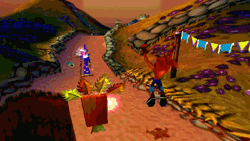
So, the core gameplay is great still and the new level themes make everything stronger. You have Crash visiting the future with convater belts, running across rooftops with people swinging swords, him running through the middle ages with dangerous frogs wanting to kiss Crash and the riding levels being done with Coco this time out on a tiger in China.

Having such level verity on visuals alone, helped Naughty Dog flex their creative bones, leading to the core Crash gameplay being some of the strongest it has ever been. This is further pushed with a new collectable; the Time Relics. These are the time trails for every single level and you can freeze the clock for X amount of time based on numbered boxes you break. If you loved games like Sonic the Hedgehog, these will make you happy as you are dashing through the level at your top speed.
You have one of three types of Relics you can find; Sapphire, Gold and Platinum. You only need the Sapphire ones to unlock all the hidden levels but getting gold or platinum feels so rewarding. So that covers it for Crash’s main gameplay, but what about the other styles?
Crash 3 introduces a few new gameplay styles into the series and we will go in order. Crash can swim underwater with a few 2D stages where he dons scuba-gear and swims. These control well with Crash having the ability to swim faster when you mash the X button and his trademark spin can still be used. Crash also can hop on a ride underwater that speeds up his movement and have the ability to shoot missiles (breaking boxes and foes like Sharks).
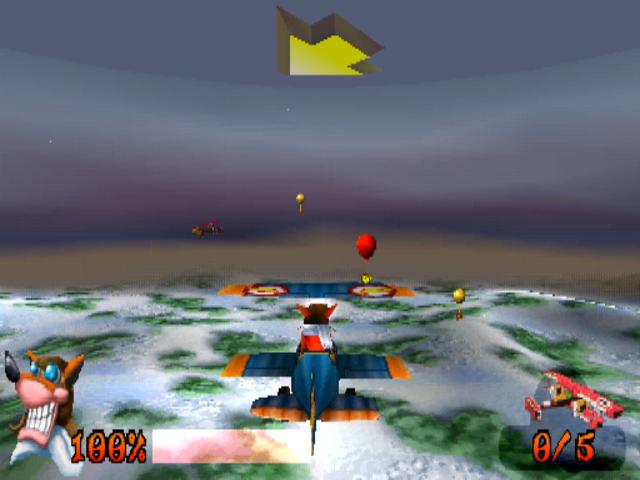
But the biggest new addition are the three rides Crash & Coco can use; the Bi-Plane, the Motorcycle and the Jet Ski. The Bi-Plane allows you to fly in the sky, roll to dodge incoming fire and shoot down boxes & blimps. The goal for these stages is for Crash and Coco to take out X amount of objects all the while breaking all the boxes hanging off balloons. Both Crash and Coco use the plane and it controls well enough. A secret stage called ‘Rings of Power’ has Crash moving very fast in the plane as well.
The Motocycle is something only Crash can ride and its okay. You can move left or right, hold down X to move forward and your end goal is to beak all the boxes all the while getting first place at the end of the goal. These can be fun and I honestly enjoyed these levels. They can be hard to control sometimes though.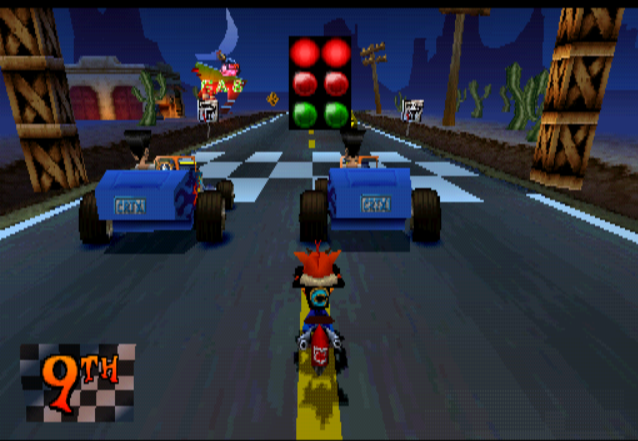
Last new ride is the Jet-Ski and it pops up often. Coco is the only one that uses this and it opens the doors for some of the larger levels in the game. You explore a ocean during pirate times, with pirate ships, sailors and more blocking your path. Coco’s goal is to find the exit warp and break all the boxes. The controls here are simple; hold X to move forward and use the left stick to move around. You can hop off of ramps if you build up enough speed and can even dive into the water for some extra lives if you hit it with enough impact after a jump.
What makes all these styles work is that they control well, are fun and do not detract from the core platforming experience. You still have a good 60% of the game dedicated to core Crash gameplay we saw in past titles and Naughty Dog struck a good balance between old and new with this angle.
Bosses should be noted, as they are all quite fun. Tiny is the first boss and it is a simple set up where you have to take him out by letting him send his lion army out first before he bounces around three times. After jabbing his spear into the ground, you can spin into him for a blow. Do this three times and its done! Crash gets the power up that allows for a more powerful belly flop.
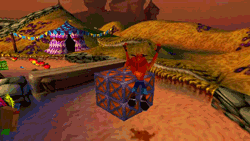
The second boss is Dingodile, as he surrounds himself with barriers for each round and when you find an opening you spin into him. After a few hits, he goes down and you get the very helpful double jump move.
The third boss is N. Trophy, as he has a few phases. He sends out a few waves of energy that you have to jump over and after this happens a few times, he tires out and you can then jump across a few platforms to land a hit. Do this enough, and you beat him.
 The final two are very interesting, with the former being a space battle between Coco and N. Gin while the later one is a really fun boss fight with Cortex. Coco’s space battle introduces space combat and it is a lot of fun shooting at the different weak points on N. Gin’s mech. The battle with Cortex has you avoiding Aku Aku & Uka Uka’s attacks against each other long enough to be able to spin Cortex’s blaster shot back then spin him into a pit.
The final two are very interesting, with the former being a space battle between Coco and N. Gin while the later one is a really fun boss fight with Cortex. Coco’s space battle introduces space combat and it is a lot of fun shooting at the different weak points on N. Gin’s mech. The battle with Cortex has you avoiding Aku Aku & Uka Uka’s attacks against each other long enough to be able to spin Cortex’s blaster shot back then spin him into a pit.
These final boss fights unlock two great moves for Crash; one being the Wama Fruit Bazooka (which can break Nitro Creates) and a Super Dash (holding down R1/R2 to move faster). Both can be very useful for box breaking while the later can be used to greatly assist Time Trails.
Crash 3 is one of the best looking PlayStation games of all time, with the game having some strong animation work, locked 30FPS frame rate and plenty of visual variety to keep things interesting.

The death animations that we saw in Crash 2 come back here but they are far more common. We have ones ranging from Crash getting his pants cut into pieces and him running away too getting kissed by a frog and the frog turning into a prince. These show a lot of care and effort went behind the world of the game and Crash’s character, making him feel more lively than before.
Musically, this is my personal favorite out of the entire Naughty Dog line of Crash games. Strong melodies across the board with the Warp Room theme being THE theme for the Crash series to me.
Here are some tracks we really enjoyed from the game.
Under Pressure – Midnight Run – Bone Yard – High Time – Stone Age Bonus Room
This game is a pure classic that does so much right. Between the tight controls and great presentation in addition to strong level designs and creative new gameplay styles, Crash 3 ends up being one of the best games in the series.
Naughty Dog was supposed to stop with Crash here and for the conclusion to series, this was a great way to go out. But we have one more Naughty Dog game to look at, with Crash Team Racing up next.
